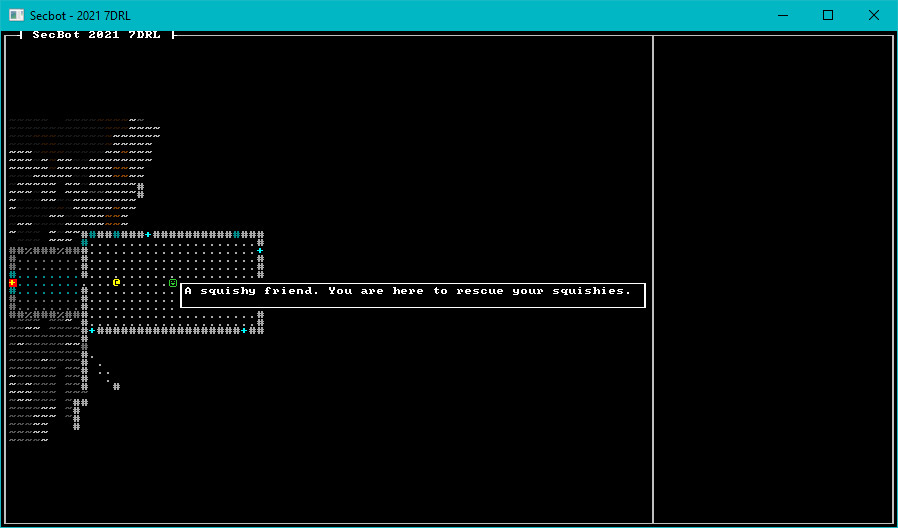This tutorial is free and open source, and all code uses the MIT license - so you are free to do with it as you like. My hope is that you will enjoy the tutorial, and make great games!
If you enjoy this and would like me to keep writing, please consider supporting my Patreon.
Adding a colonist
A central theme of SecBot is locating the colonists who live in and around the mining facility. That makes adding them a top priority! So I started day #2 by trying to do just that.
Create a Colonist Tag
There needs to be a way to indicate that an Entity is a Colonist. The easy way to accomplish this is with another tag component - a component that doesn't contain data, but just indicates a flag is set by existing.
Open components/tag.rs and add the following tag component:
#![allow(unused)] fn main() { pub struct Colonist; }
Spawning Colonists
We're going to be adding colonists all over the map. We'll eventually have some variation in colonists, too. Let's create a new module to hold the colonist spawning logic. Create a new file: src/map/layerbuilder/colonists.rs. Paste the following into it:
#![allow(unused)] fn main() { use bracket_lib::prelude::*; use legion::*; use crate::components::*; pub fn spawn_random_colonist(ecs: &mut World, location: Point, layer: u32) { ecs.push(( Colonist{}, Position::with_pt(location, layer), Glyph{ glyph: to_cp437('☺'), color: ColorPair::new( LIME_GREEN, BLACK ) }, Description("A squishy friend. You are here to rescue your squishies.".to_string()) )); } }
This should look familar. It pushes a new entity, and gives them a Colonist tag as well as a Position (where they are on the map), a Glyph (how to render them), and a Description for tool-tips.
Activate the module and make it available by adding mod colonists; use colonists::*; to src/map/layerbuilder/mod.rs.
Adding the First Colonist
Open layerbuilder/entrance.rs. Add an import for the spawn_random_colonist function, modifying the previous use super::all_space import.
#![allow(unused)] fn main() { use super::{all_space, spawn_random_colonist}; }
Now scroll down to where we call add_exit in the add_docking_capsule function. Immediately after add_exit(...), add the following:
#![allow(unused)] fn main() { // Populate rooms populate_rooms(&mut rooms, map, ecs); }
Then, at the end of entrance.rs add the following function:
#![allow(unused)] fn main() { fn populate_rooms(rooms: &mut Vec<Rect>, map: &mut Layer, ecs: &mut World) { // The first room always contains a single colonist spawn_random_colonist(ecs, rooms[0].center(), 0); // Each room after that can be random } }
Give it a Go
The entry room now contains a colonist! They don't do anything other than exist and have a tool-tip, but it's good to see that the entity/component system we setup is working.

You can find the source code for
hello_colonisthere.
Up Next
In the next section, we'll be adding more colonists - and adding some UI to count them, and categorize their status.
